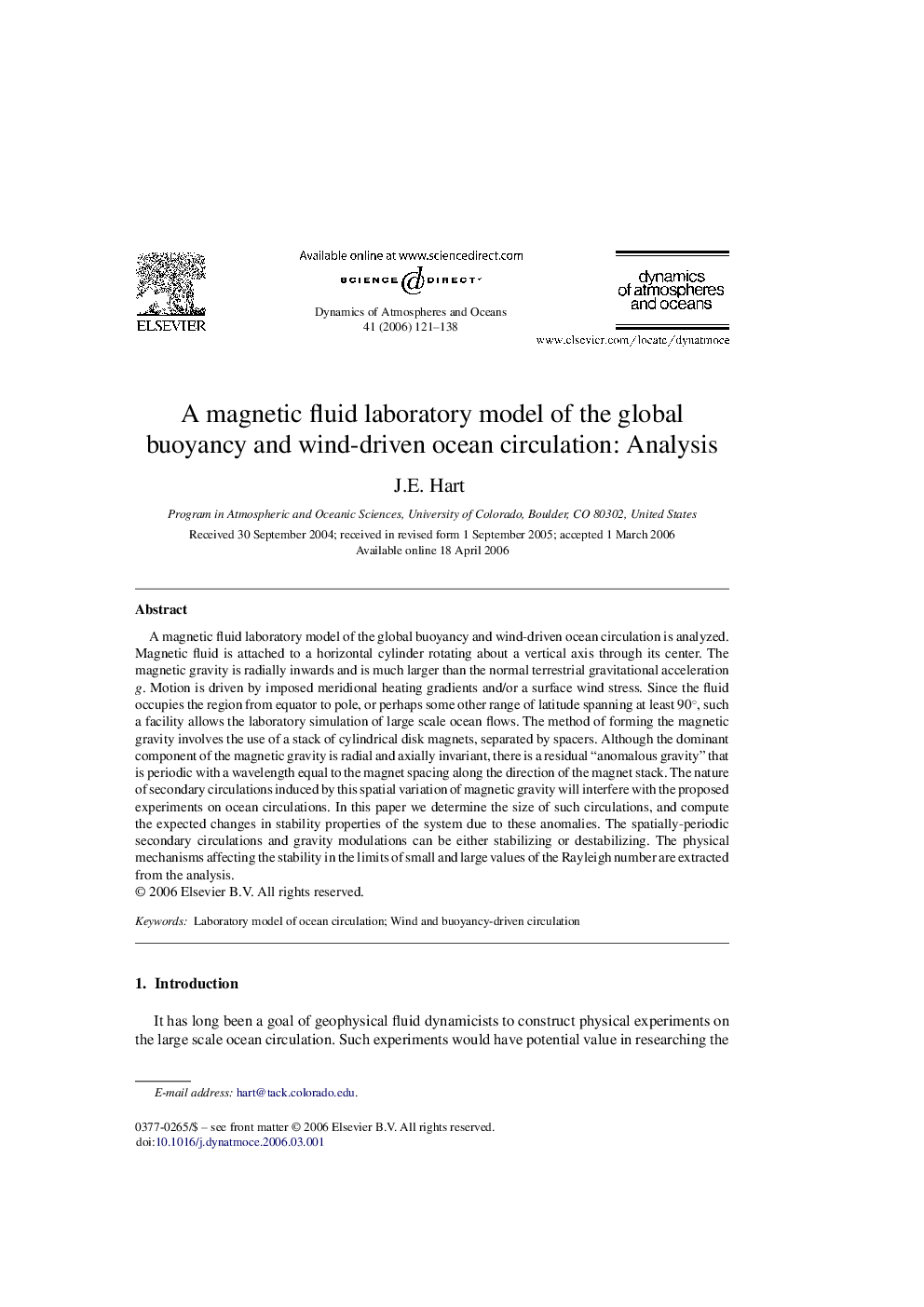| Article ID | Journal | Published Year | Pages | File Type |
|---|---|---|---|---|
| 4674302 | Dynamics of Atmospheres and Oceans | 2006 | 18 Pages |
A magnetic fluid laboratory model of the global buoyancy and wind-driven ocean circulation is analyzed. Magnetic fluid is attached to a horizontal cylinder rotating about a vertical axis through its center. The magnetic gravity is radially inwards and is much larger than the normal terrestrial gravitational acceleration g. Motion is driven by imposed meridional heating gradients and/or a surface wind stress. Since the fluid occupies the region from equator to pole, or perhaps some other range of latitude spanning at least 90°, such a facility allows the laboratory simulation of large scale ocean flows. The method of forming the magnetic gravity involves the use of a stack of cylindrical disk magnets, separated by spacers. Although the dominant component of the magnetic gravity is radial and axially invariant, there is a residual “anomalous gravity” that is periodic with a wavelength equal to the magnet spacing along the direction of the magnet stack. The nature of secondary circulations induced by this spatial variation of magnetic gravity will interfere with the proposed experiments on ocean circulations. In this paper we determine the size of such circulations, and compute the expected changes in stability properties of the system due to these anomalies. The spatially-periodic secondary circulations and gravity modulations can be either stabilizing or destabilizing. The physical mechanisms affecting the stability in the limits of small and large values of the Rayleigh number are extracted from the analysis.
